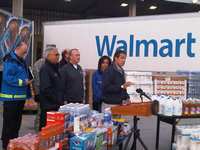- Sections :
- Crime & Public Safety
- Restaurants & Food
- Sports
- More
621 Area Code numbers coming January 23, 2025

CONROE, TX -- Responding to high demand for new telephone numbers in the greater Houston area, the Public Utility Commission of Texas has approved an additional area code for the region currently utilizing area codes 281, 346, 713, and 832. The new 621 area code will encompass the greater Houston metropolitan area and surrounding communities such as Baytown, League City, Missouri City, Pasadena, Pearland, Sugar Land, and The Woodlands, reaching from Harris County into Austin, Brazoria, Chambers, Fort Bend, Galveston, Liberty, Montgomery, San Jacinto, and Waller Counties.
Starting on January 23, 2025, telephone customers requesting a new phone number in the 281/346/713/832 area code overlay region may be assigned a number beginning with 621. Whether they’re requesting new service, adding a line, or in some cases, moving their service, customers who would have expected a number beginning with 281, 346, 713, and 832 will be assigned one with the new code.
Telephone customers should know the following key facts about the 621area code overlay:
- Telephone numbers, including the current area code, will not change.
- The price of a call, coverage area, or other rates and services will not change due to the overlay.
- What is a local call now will remain a local call.
- Customers in the overlay region will continue to dial 10 digits for local calls within and between the overlay area codes, and 1+10 digits for long distance calls.
- Customers can still dial just three digits to reach 911 and 988, as well as 211, 311, 411, 511, 611, 711, or 811 if those are currently available in their community.
Telephone customers should continue to identify their telephone number as a 10-digit number (3-digit area code + 7-digit telephone number) and include the area code when sharing the number.
Customers should ensure that the accurate area code is reflected across their phone-related life, from any equipment that uses their phone number (i.e., automatic dialing equipment, wireless phones, PBXs, fax machines, internet dial-up numbers, speed dialers, call forwarding settings, voicemail services, medical alert devices, safety alarm security systems and gates, ankle monitors, etc.) to printed communications including websites, personal and business stationary and printed checks, advertising materials, contact information, and personal or pet ID tags.
For more information, please contact your local telephone service provider or visit the Public Utility Commission of Texas website for further information.





